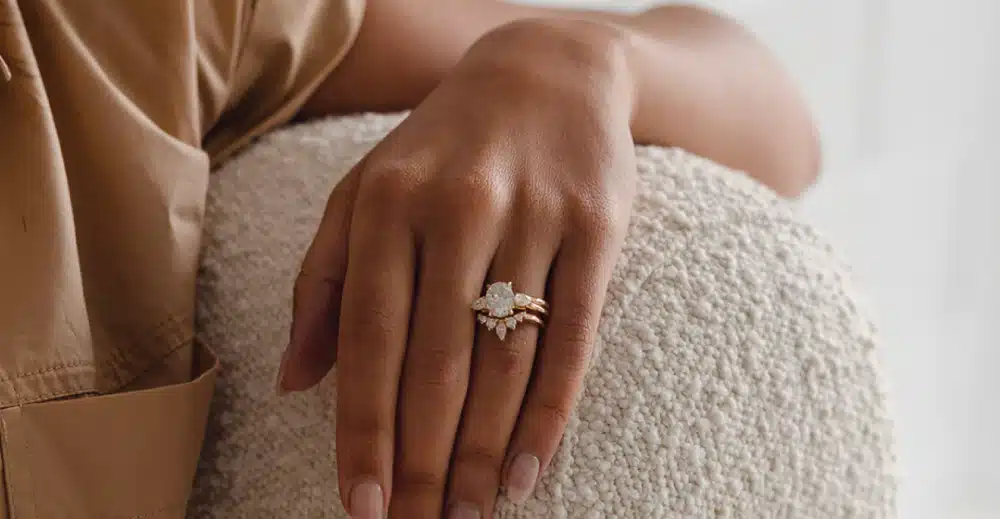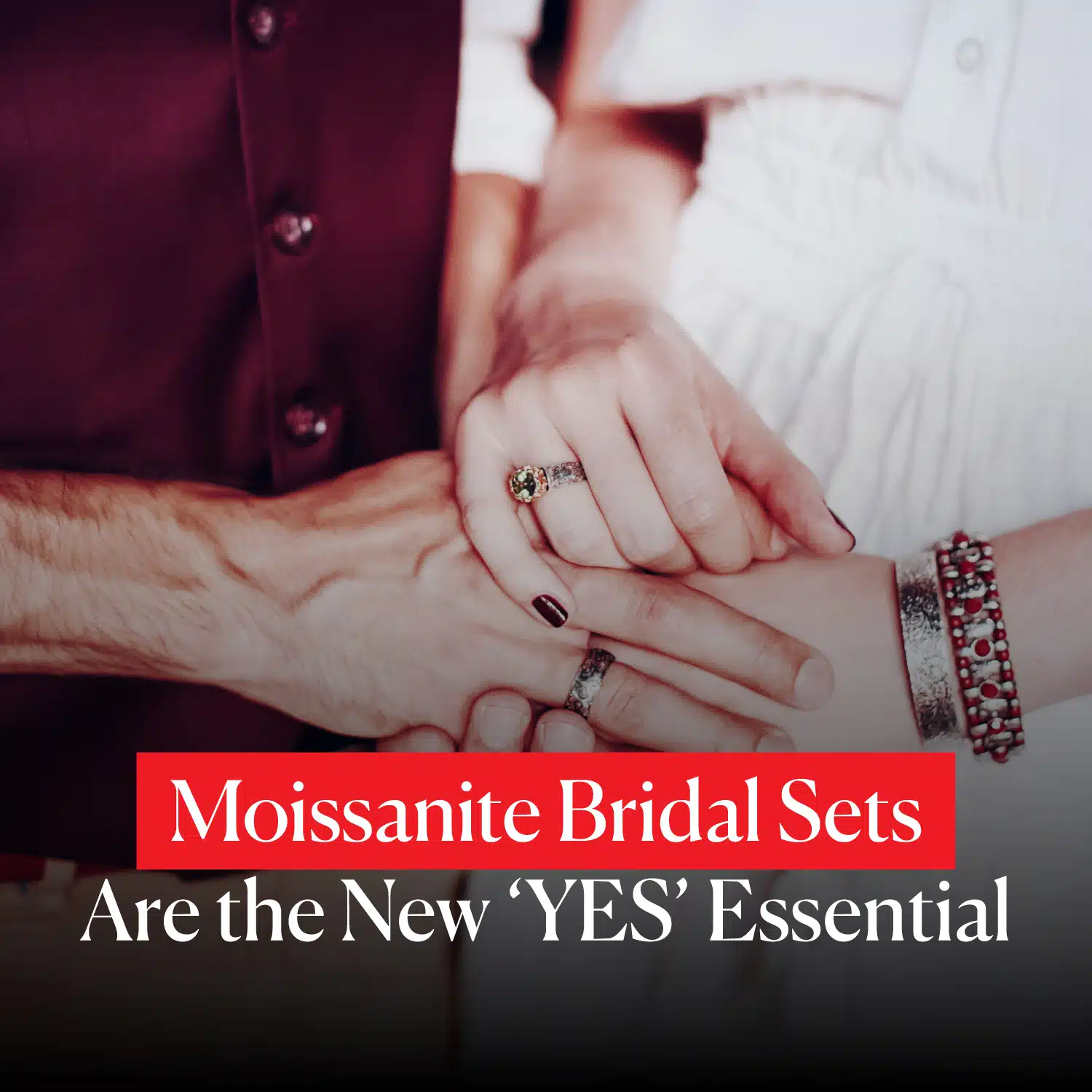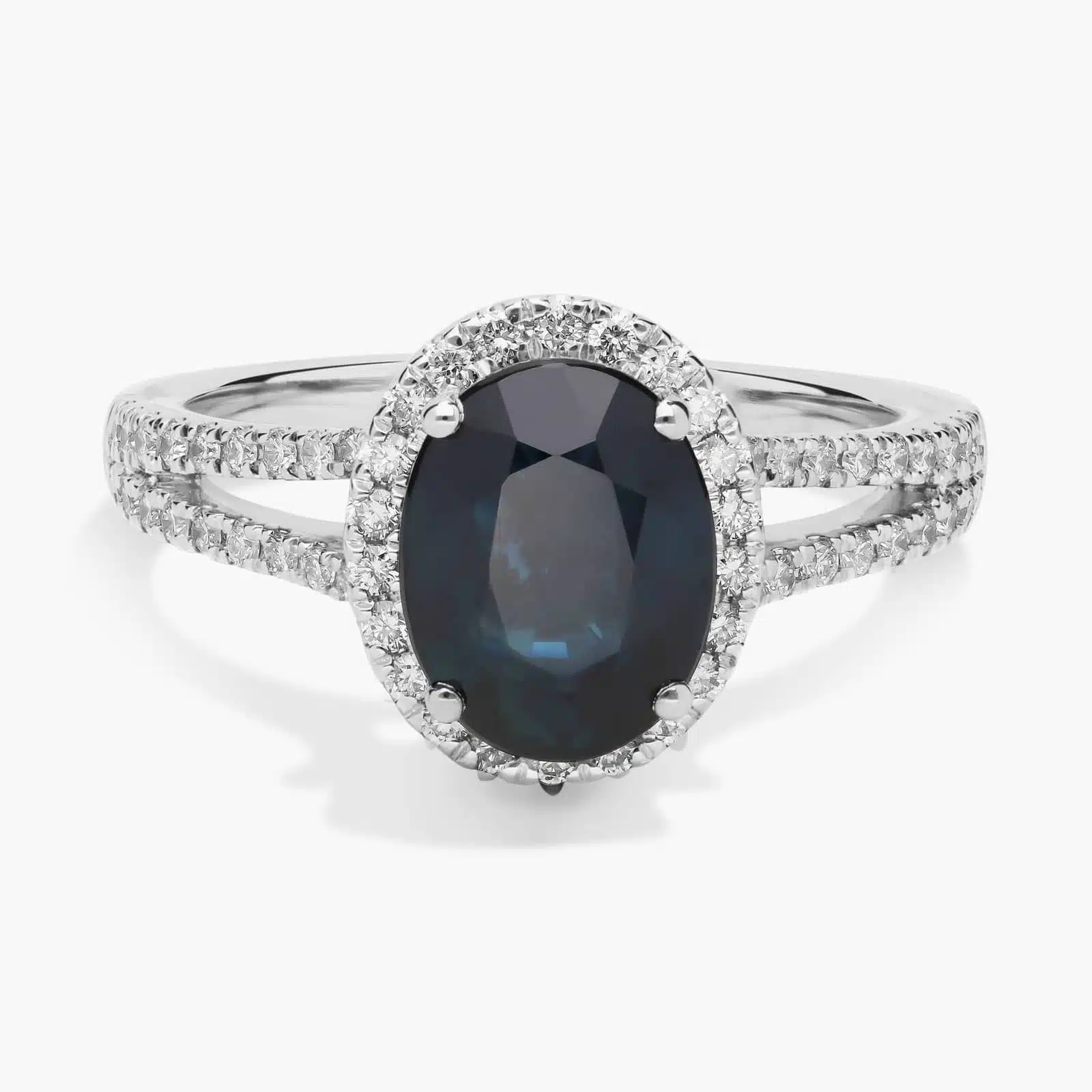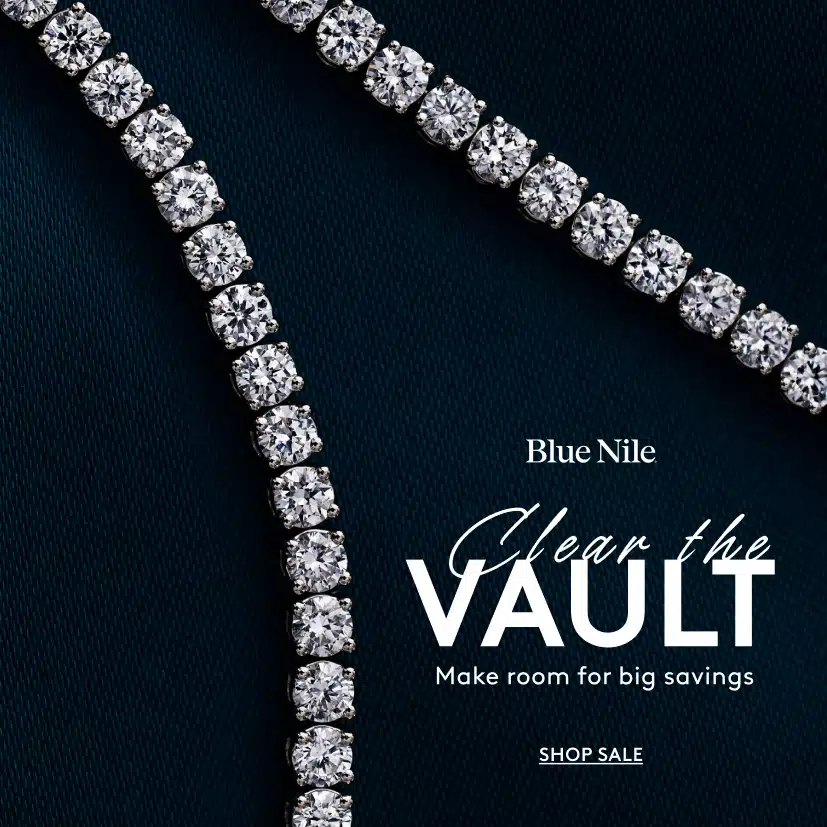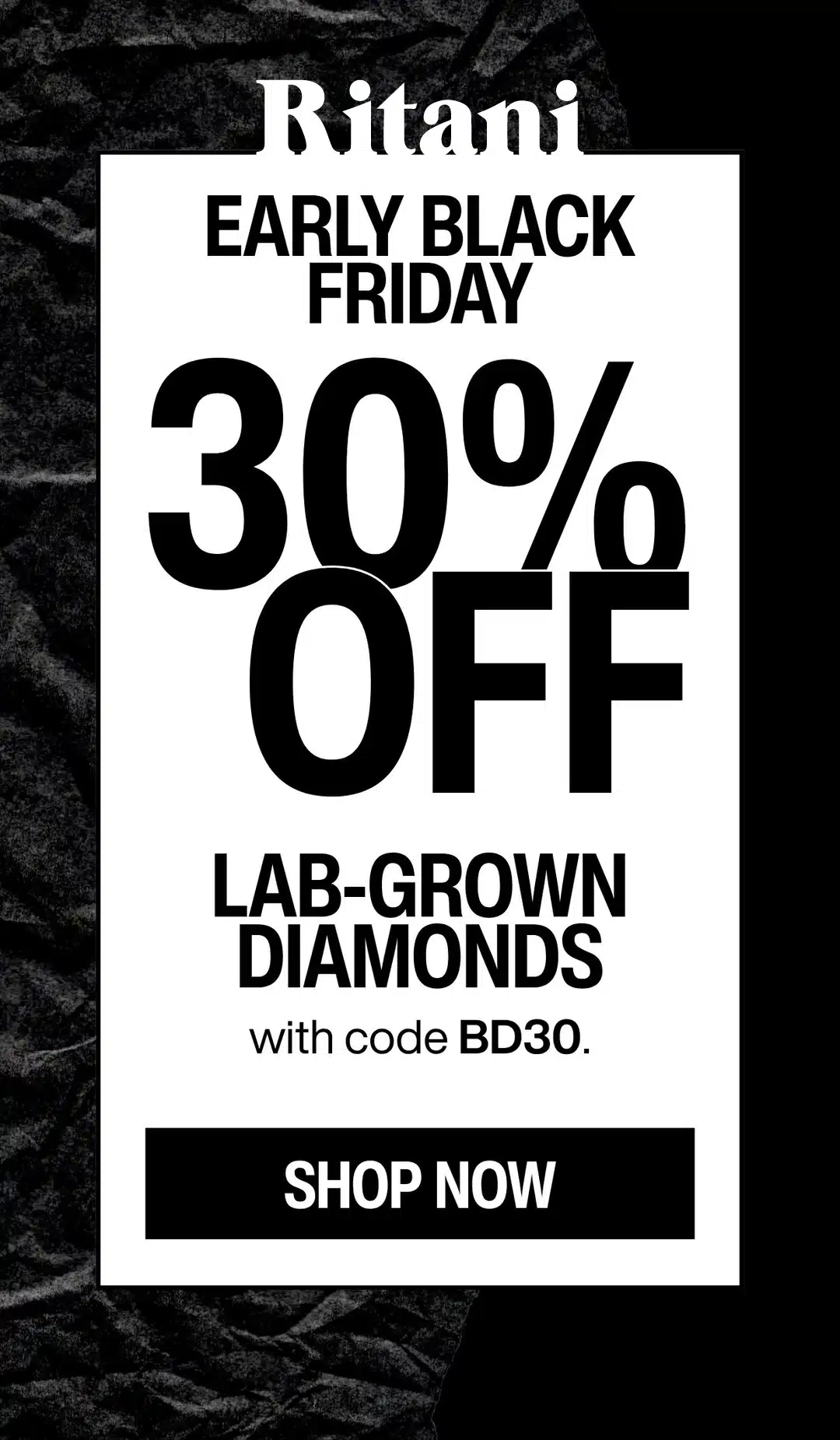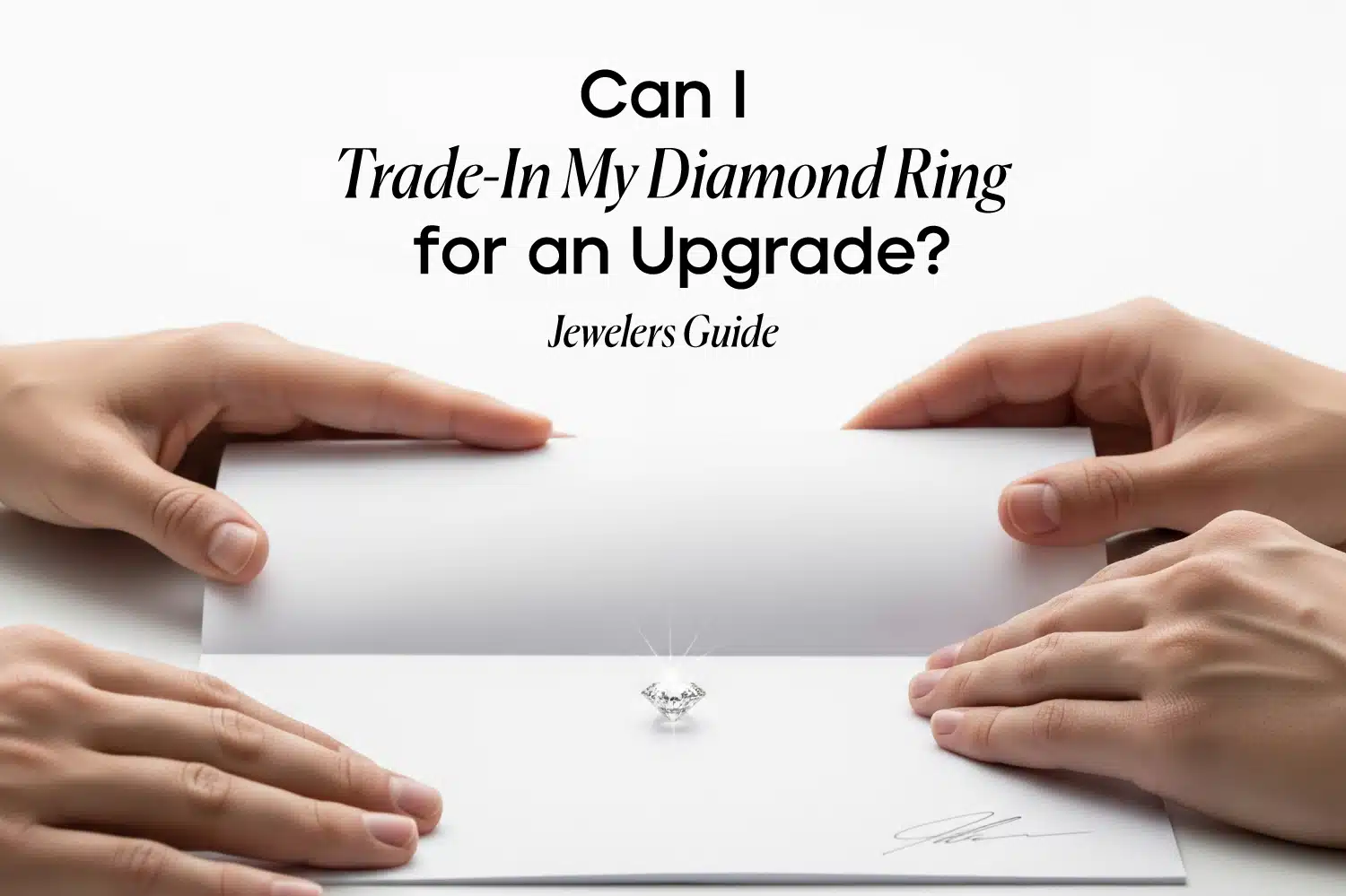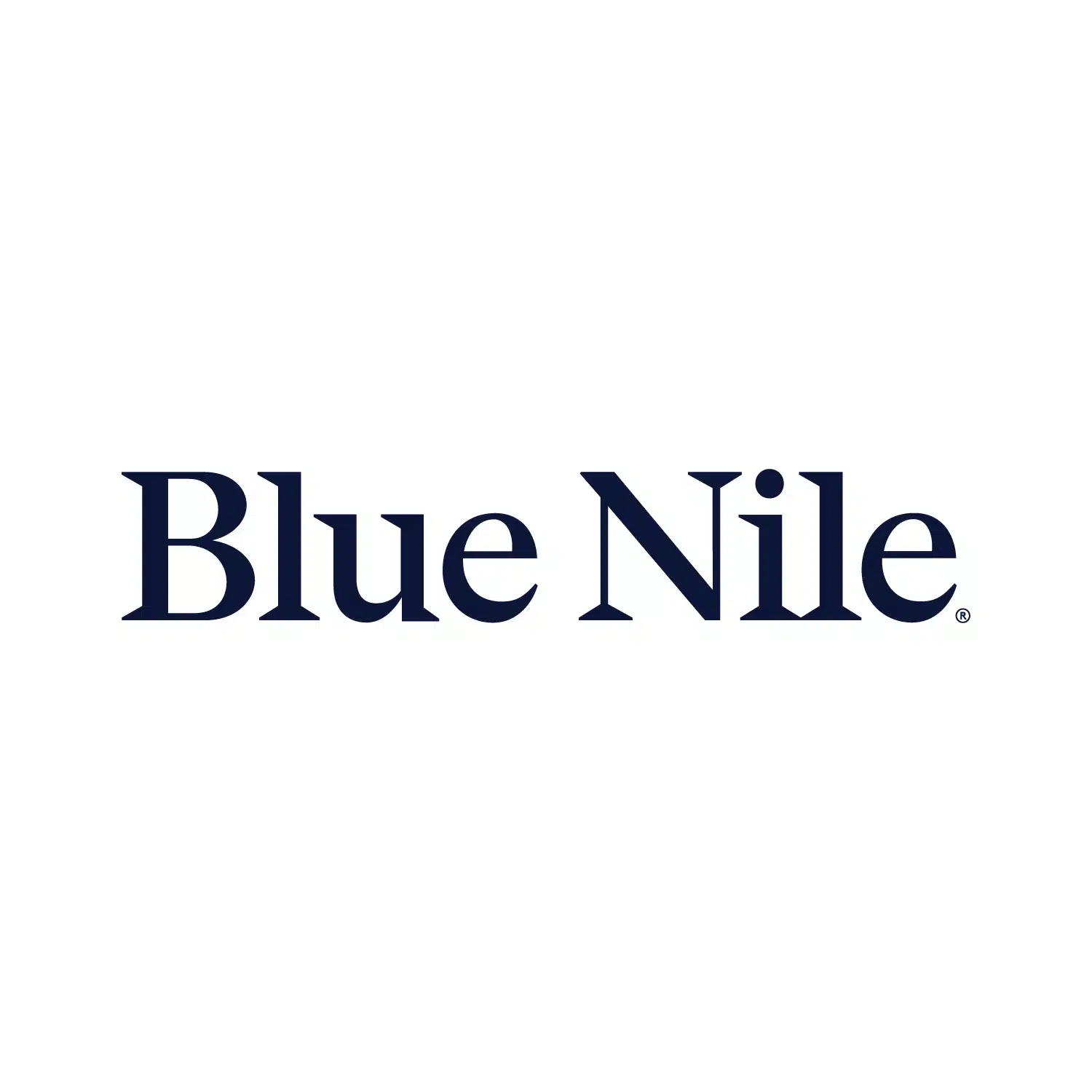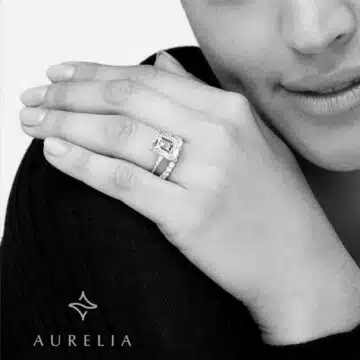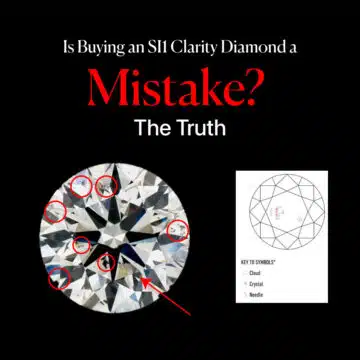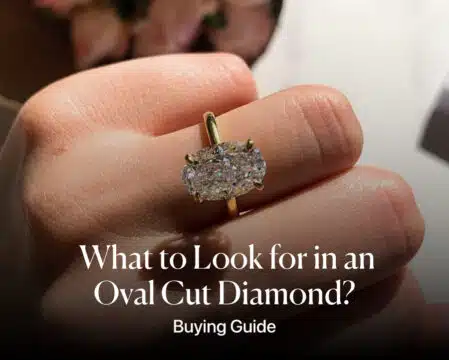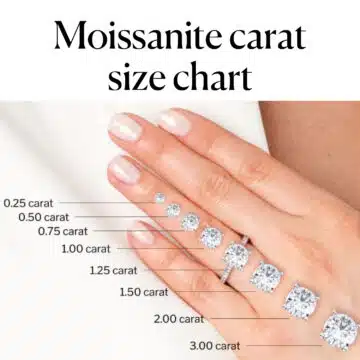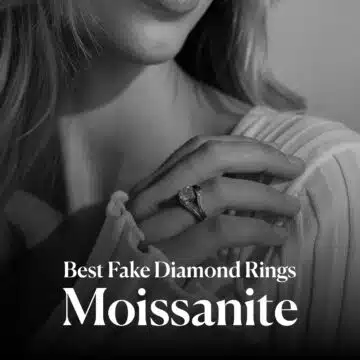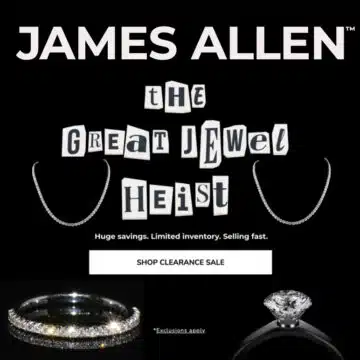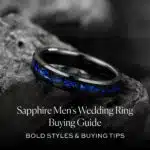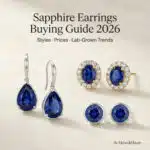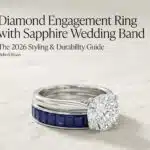Yes, you can absolutely trade-in your diamond ring for an upgrade, and your two primary paths are using a retailer’s official “upgrade program” for convenience, or selling the diamond ring to a third-party buyer to maximize your cash value before purchasing a new one.
Whether your style has evolved, your budget has grown, or you’re ready for a bigger statement, the thought of upgrading your engagement ring can be exciting. But it’s also filled with anxiety. “How does it work? Will I get ripped off? What is my ring really worth?” These are the exact questions that every smart person in your shoes asks.
As your friend in the business, I am going to be your brutally honest guide through this entire process. We’re going to pull back the curtain on the industry, expose the traps you need to avoid, and I will give you a clear, step-by-step blueprint to ensure you get the absolute maximum value for your old ring so you can get the new one you truly love.
- Retail Price vs. Resale Value: The Harsh Truth You Need to Hear
- Path A vs. Path B: Which Upgrade Strategy is Right for You?
- A Deep Dive into Path A: The Top Retailer Upgrade Programs
- A Deep Dive into Path B: Selling Your Diamond for Max Cash
- How to Get the Absolute Best Deal, Step-by-Step
- Diamond Trade-In Calculator & Resale Value
- A Checklist for a Flawless Upgrade
- Your Diamond Trade-In Questions, Answered
- The Verdict: An Upgrade Should Be Exciting, Not Expensive
Diamond IQ Test: Natural or Lab-Grown?
Two identical diamonds: GIA Certified, 1.51ct, D Color, VVS1, Ideal Cut. One is natural ($16,530), the other is lab-grown ($2,390). Choose the diamond you like better and see if you can match it to its origin.
Retail Price vs. Resale Value: The Harsh Truth You Need to Hear
Alright, let’s pull back the curtain on the single most important—and most misunderstood—concept in the jewelry world. Before you can even think about getting the best value for your diamond trade-in, you must understand the Golden Rule of Upgrades: the price you paid for your ring has almost no relationship to its current cash value.
I know that stings to hear, but as your friend in the business, I need to be brutally honest with you. A diamond ring is a luxury retail product, just like a brand-new car. The moment you “drove it off the lot,” it was worth significantly less than what you paid.
Why? Because that original price tag was a combination of two things:
- The Wholesale Cost: This is the base cost of the diamond and the metal setting on the international market.
- The Retail Markup: This is the much larger portion. It’s what the jeweler added on to cover their own significant costs: the rent for their beautiful store, the salaries of their staff, their marketing budget, shipping, insurance, and, of course, their own profit margin.
When you first bought the ring, you paid for the stone and that entire retail experience. But when you go to sell it or trade it in, the new buyer is only interested in the first part: the raw, wholesale value of your diamond and the scrap value of the metal.
They are not going to pay you for the marketing budget and the rent of the store where you first bought it.
Busting the #1 Myth: Your Insurance Appraisal is Not a Price Tag
This is the second part of that harsh truth, and it’s a trap that causes so much confusion. You probably have an appraisal document for your ring, maybe for $10,000, that came with your original purchase. It’s natural to think that this is what your ring is “worth.” It is not.
An insurance appraisal represents the “retail replacement value.” It’s an inflated number that estimates what it would cost a high-end jewelry store, with all its overhead, to replace your exact ring tomorrow at full retail price.
Jewelers and insurance companies are both happy with this high number—it makes you feel like you got a great deal, and it allows the insurance company to charge a higher premium.
But a cash buyer or a trade-in expert will never look at that document. They are interested in the diamond’s liquid, wholesale value.
We break down this crucial document and what it really means for you in our full guide on the Definition of an Appraisal for a Diamond Ring. Understanding this difference is the first, critical step to getting a fair deal.
Path A vs. Path B: Which Upgrade Strategy is Right for You?
Now that you’re armed with the truth about your ring’s value, let’s talk strategy. When it comes to upgrading your diamond ring, you have two very distinct paths you can take. There is no single “best” way; the right choice depends on what you value more: convenience or maximum financial return.
I’ve created this simple table to give you a clear, at-a-glance overview of your two options.
| Feature | Path A: The Retailer Trade-In | Path B: The Sell & Buy Strategy |
| How it Works | You trade your old diamond back to the original retailer for credit towards a new, more expensive one. | You sell your ring to a specialized third-party buyer for cash, then use that cash to buy a new ring from anywhere. |
| Primary Pro | Incredibly Simple & Convenient | Maximizes Your Financial Return |
| Primary Con | Less Financial Value & Locked Into One Vendor | More Time-Consuming & Complicated |
Lets Look at Path A: The Retailer Trade-In Program (The Path of Convenience)
Think of this as the “Easy Button.” If you bought your original ring from a reputable vendor with a good lifetime upgrade policy, this is the most straightforward path. You simply send them your ring, and they give you 100% of what you originally paid for the diamond as a credit towards a new, more expensive one.
- Who This Is For: This is the perfect choice for someone who loved their experience with their original jeweler (like James Allen or Blue Nile), trusts them completely, and values a simple, hassle-free process above all else.
- The Big Advantage: It is incredibly easy. There is no negotiating, no searching for buyers. It’s a clean, one-stop-shop transaction.
- The Catch: You are completely locked into that one vendor for your new purchase, and the new diamond you choose must typically be at least double the value of your original one.
Now Look at Path B: The Sell & Buy Strategy (The Path of Maximum Value)
Think of this as being your own general contractor. It requires more work, but it gives you complete control and almost always results in a better financial outcome.
- Who This Is For: This is for the value-maximizer. It’s for the person who wants to get the absolute highest cash value for their old ring so they have the freedom to buy their new ring from any jeweler in the world.
- The Big Advantage: You get cold, hard cash in your hand that you can use anywhere you want. A specialized diamond buyer will almost always offer you more cash for your diamond than the “credit” you’d get from a retailer’s upgrade program.
- The Catch: This path requires more effort. You’ll need to get quotes from buyers, securely ship your diamond for inspection, and manage two separate transactions: one for selling, one for buying.
A Deep Dive into Path A: The Top Retailer Upgrade Programs
Welcome to Path A, the path of convenience. If the idea of hunting for a separate buyer feels overwhelming, and you purchased your original diamond from a top-tier online retailer, their lifetime upgrade program can be a fantastic, stress-free option.
These programs are a brilliant marketing move by the vendors, designed to create lifelong customer loyalty. The core promise is incredible: they will give you back 100% of what you originally paid for your diamond as a credit towards a new one. But, as with everything in the jewelry world, you need to understand the fine print. Let’s break down the two best programs in the industry.
The James Allen Lifetime Upgrade Program
James Allen is known for its phenomenal customer service, and their upgrade policy is a perfect example of this.
- The Policy: You are entitled to a 100% credit of the original purchase price of your loose diamond.
- The Catch: This credit must be applied to the purchase of a new diamond that is at least double (2x) the value of your original stone.
How it Works (A Real-World Example):
Lets say, Five years ago, you purchased a beautiful 1.00-carat G-VS2 diamond from James Allen for $5,200. You’re now ready for an upgrade. James Allen’s lifetime upgrade policy allows you to exchange your diamond for 100% of its original purchase price toward a new one.
Here’s how it works:
- You send your diamond back to them, and they give you a $5,200 credit toward a new stone.
- Because of their “2x” rule, the new diamond you choose must have a price of at least $10,400 (twice the original purchase price).
- You then pay the difference of $5,200 to get your spectacular new, larger stone.
The policy is simple, clean, and incredibly straightforward. For more on their world-class service and why they can be trusted, see our full James Allen Review.
James Allen is a top leader in online diamond sales, offering cutting-edge imaging technology that lets you inspect diamonds as if you were using a jeweler's loupe. With the largest exclusive selection of loose diamonds available online and excellent pricing, they also boast one of the finest collections of lab-created diamonds on the market. They currently run a 25% discount on selected lab-grown diamonds!
WHAT WE LOVE ABOUT THEM:
- 30-day no-questions-asked return policy, with a prepaid shipping label provided by James Allen.
- Lifetime warranty on all purchases.
- Free international shipping.
- Complimentary prong tightening, repolishing, rhodium plating, and cleaning every six months.
- Insurance appraisals included with purchases.
- One free resizing within 60 days of purchase.
- Free ring inscriptions available.
- Best-in-class high-quality imagery for every diamond in stock.
- 24/7 customer support.
- Premium, best-in-class packaging.
The Blue Nile Diamond Upgrade Program
Blue Nile is an industry giant and was one of the pioneers of this customer-centric approach. Their program is almost identical to James Allen’s.
- The Policy: You receive a 100% credit of the original purchase price for any GIA or AGS-certified loose diamond.
- The Catch: The credit must be applied to a new diamond purchase that is at least double (2x) the value of your original diamond.
- The Advantage: Just like with James Allen, it’s a seamless one-stop-shop process. Blue Nile’s massive inventory gives you an incredible selection to choose from for your upgrade. The trust they have built as an industry leader is a huge part of their appeal, a topic we cover in depth in our Blue Nile Reviews 2024.
The Critical “Throwing Good Money After Bad” Trap
Now for my most important piece of advice on Path A. These upgrade programs sound incredible, and at vendors like James Allen and Blue Nile, they genuinely are. Why? Because you paid a fair, competitive price for your diamond in the first place.
However, many traditional mall jewelers with massive markups offer similar-sounding programs, and this is where you can fall into a trap. If you originally paid $8,000 for a diamond that was only worth $5,000 on the open market, getting an $8,000 credit from them isn’t a good deal.
It just locks you into overpaying again for your new diamond, forcing you to throw good money after bad. A great upgrade program is only as good as the initial value you received from the vendor.
Blue Nile is one of the biggest and most recognized online jewelry retailers, offering an extensive and exclusive inventory. Their high-resolution images are improving and getting closer to the quality offered by James Allen, while their prices remain highly competitive. Right now, Blue Nile offers up to 30% savings on jewelry during a limited-time sale.
WHAT WE LOVE ABOUT THEM:
- 30-day no-questions-asked return policy, with a prepaid shipping label provided by Blue Nile.
- Lifetime warranty on all purchases.
- Free shipping on every order.
- Complimentary services every six months, including prong tightening, repolishing, rhodium plating, and cleaning.
- Insurance appraisal included with your purchase.
- One free resizing within the first year.
- High-quality images available for roughly half of their diamond selection.
- 24/7 customer service support.
- Full credit toward future upgrades, as long as the new item is at least double the value.
- Best-in-class order fulfillment process.
A Deep Dive into Path B: Selling Your Diamond for Max Cash
Welcome to Path B, the path of maximum value. This is the strategy for the person who wants to get the highest possible cash offer for their ring, giving them the ultimate freedom to shop for their new diamond anywhere in the world.
This path requires a bit more work, but it almost always results in a better financial outcome. To do it right, you need to know who to trust, and who to avoid.
Third-Party Online Buyers (Your Best Option)
If you want the best possible cash price for your diamond, you need to go to a specialist. Companies like Abe Mor (as my competitors rightly pointed out) are in the business of buying diamonds, not just selling them.
Why they’re better:
Their business model is built on acquiring high-quality diamonds for their own inventory. They have extensive networks and a deep understanding of the current wholesale market, which means they can almost always offer you a higher cash price than a standard retailer.
The Process:
It’s a secure and professional experience. You typically get an initial quote online, then they provide a prepaid, fully insured shipping label. You send them the ring, their gemologists inspect it and confirm its condition, and then they make a final, firm cash offer which you can accept or decline.
Pawn Shops & Local Jewelers (Your Worst Option)
This is the path of last resort. I need to be blunt: you will almost certainly get the lowest possible offer for your diamond at a pawn shop or a standard local jeweler.
Why they offer less:
They are not diamond specialists; they are generalists. A pawn shop’s business model is built on buying low and selling high on a wide range of goods. A local jeweler, unless they specialize in estate pieces, typically doesn’t want to buy diamonds from the public, as it competes with their new inventory.
They are not incentivized to give you a strong offer. We expose all the pitfalls and explain exactly why the offers are so low in our definitive guide to Selling Diamond Rings at a Pawn Shop.
My Mehedi Verdict:
If you are choosing Path B, you must go with a reputable online diamond buyer. It is the only way to ensure you are getting a fair, market-driven cash price. But before you even contact a buyer, you need a realistic idea of what your ring is actually worth.
You can get a powerful, data-driven estimate using our Diamond Appraisal Calculator. For a complete breakdown of every option available for cashing in your diamond, our ultimate guide on how much can a diamond be sold for is a must-read.
How to Get the Absolute Best Deal, Step-by-Step
Knowledge is power, but a clear plan is what gets you the win. I’ve taken all of the industry secrets and strategies we’ve discussed and distilled them into a simple, four-step blueprint.
Follow this exact plan, and I guarantee you will get the absolute maximum return for your diamond trade-in, paving the way for the spectacular upgrade you deserve.
Step 1: Gather Your Paperwork (Your Diamond’s Resumé)
Before you talk to anyone, you need to assemble your diamond’s “resumé.” A professional buyer’s offer will be based entirely on the verified specs of your stone, so having your documents in order is the first step to being taken seriously.
- Your Diamond Certificate: This is your most important document, your non-negotiable proof of quality. A GIA or AGS certificate is the gold standard and will always command the highest value.
If you have an IGI, HRD, or other certificate, have that ready as well. If you’ve lost your original report, you can often get a digital copy from the lab’s website using the laser inscription number on the diamond’s girdle. - The Original Receipt: If you still have it, your original receipt is useful as it shows the purchase price and date, which is required for some retailer upgrade programs.
- Any Appraisals: While we know the appraisal value isn’t a cash value, it’s still good to have this document as part of your file.
Step 2: Understand Your Diamond’s Real Worth (Go in With Intel)
This is the most empowering step. You should never walk into a negotiation blind. Before you get a single offer, you need to have a realistic, data-driven baseline of your diamond’s true current market value. An emotional attachment or an inflated insurance appraisal can lead to massive disappointment.
This is exactly why we created our expert tools. By using real-time wholesale market data, these calculators are designed to give you an honest, unbiased estimate of your diamond’s liquid value.
Use our Diamond Resale Price Calculator to get a powerful, data-driven estimate of your diamond’s true market value. This number is your secret weapon. It is your anchor in reality, protecting you from lowball offers and allowing you to negotiate from a position of strength.
Step 3: Get Competing Offers (Make Them Work for You)
Never, ever take the first offer you receive. Your goal here is to get a firm offer from both Path A and Path B so you can make a true apples-to-apples comparison.
- Get Your Path A Offer: Contact the original retailer where your ring was purchased. Tell them you are interested in their upgrade program. They will give you a firm credit value that you can use towards a new purchase with them.
- Get Your Path B Offer: Contact a reputable third-party online diamond buyer (like Abe Mor). Submit your diamond’s details through their online form. They will give you a firm cash offer that they are willing to wire to your bank account.
Step 4: Do the Math and Choose Your Path
Now you have two numbers: a store credit from your original retailer and cash from a third-party buyer. The final step is to run a simple calculation to see which offer actually saves you more money.
Let’s run a real-world scenario. You want to upgrade to a beautiful new 2-carat diamond ring that costs $15,000.
- Path A (Retailer): They offer you $7,000 in credit for your old ring. Your final, out-of-pocket cost for the new ring would be $8,000.
- Path B (Third-Party Buyer): They offer you $8,500 in cash for your old ring. You sell it to them and then use that cash to buy the new ring. Your final, out-of-pocket cost is $6,500.
In this scenario, by taking a little extra time to pursue Path B, you saved yourself $1,500. This simple calculation will reveal your best financial move with undeniable clarity.
We’ve talked about the theory of wholesale value, but now it’s time to get you some real, actionable numbers. This calculator is designed to give you an honest, data-driven estimate of your diamond’s current cash value in today’s market.
Enter your diamond’s details below to arm yourself with the knowledge you need before you even start the conversation—this is your most powerful tool for getting a fair deal.
Diamond Trade-In Calculator & Resale Value
Get a realistic estimate of your diamond’s value. Start by telling us your diamond’s origin.
A Checklist for a Flawless Upgrade
Congratulations! You've navigated the tricky part of the process and maximized your budget. Now for the truly fun part: choosing that spectacular new diamond that you've been dreaming of. This is your reward for being such a savvy, prepared buyer.
To make sure your new choice is as smart as your selling strategy, here is my quick-start checklist for picking a truly flawless upgrade.
- Insist on the Right Certificate: Now more than ever, you know the importance of a top-tier lab. For a natural diamond, it must be GIA or AGS. For a lab-grown diamond, it must be IGI. This is non-negotiable.
- Prioritize Cut Above All Else: A diamond's beauty comes from its sparkle, and its sparkle comes from its cut. The first filter you should always apply is for a "Cut" grade of Excellent (GIA) or Ideal (AGS).
- Find the Sweet Spot for Value: Don't overpay for grades you can't see! The best value for your money will almost always be in the G to H Color range and the VS2 to SI1 Clarity range. These diamonds will look brilliant and eye-clean, but at a much better price.
- Trust Your Eyes: The certificate is your foundation, but the 360-degree video is your final exam. Watch it, look for that brilliant flash, and confirm with your own eyes that the stone is a true stunner.
This is just the quick start. For a complete masterclass on how to get the absolute most for your money, our two foundational guides, the Diamond Grading Chart: 4 Cs of Diamonds and our Diamond Buying Guide, have everything you will ever need to know.
Your Diamond Trade-In Questions, Answered
You've got the blueprint, but it's natural to have a few final questions about the process. Here are my direct, no-nonsense answers to the most common queries I get about upgrading and selling a diamond.
The Verdict: An Upgrade Should Be Exciting, Not Expensive
Whether you choose the convenience of a retailer's upgrade program or the maximum value of the "Sell & Buy" strategy, the power is now completely in your hands. You're no longer in the dark; you have a clear, strategic choice between two excellent paths forward.
Your ring is a symbol of your journey, and journeys evolve. By following this blueprint, you're not just 'getting rid' of an old ring; you are making a smart, informed financial decision to transform a piece of your history into a new symbol for your future. Choose your path with confidence.
Continue Your Research Journey
You're now armed with the expert blueprint to get the absolute most value for your current diamond. So, let's turn to the exciting part: using that value to find the perfect new diamond for your upgrade. These hand-picked guides and tools are your essential next steps.
In-Depth Retailer Reviews & Deals
- A Head-to-Head Battle: Brilliant Earth vs. James Allen Compared – (https://moissanitebyaurelia.com/brilliant-earth-vs-james-allen/)
- Maximize Your Budget: The Latest James Allen Promotional Codes – (https://moissanitebyaurelia.com/james-allen-promotional-code/)
- Another Great Option: Is Ritani a Legit Place to Buy From? – (https://moissanitebyaurelia.com/is-ritani-legit/)
Advanced Diamond Knowledge for Your New Stone
- Considering a Modern Alternative?: An Expert Guide to the Types of Lab-Grown Diamonds – (https://moissanitebyaurelia.com/types-of-lab-grown-diamonds/)
- Mastering the Sweet Spot for Value: An Expert Guide to H Color Diamonds – (https://moissanitebyaurelia.com/h-color-diamond-pricing-tips-for-buyers/)
- A Deep-Dive on Clarity: What is the Best Diamond Clarity for Value? – (https://moissanitebyaurelia.com/what-is-the-best-diamond-clarity/)
Practical Guides & Powerful Calculators
- Putting it all into Action: A Step-by-Step Guide to Build Your Own Engagement Ring on James Allen – (https://moissanitebyaurelia.com/build-your-own-engagement-ring-on-james-allen/)
- Get a Price Check for Your Upgrade: The Aurelia Diamond Rate Calculator – (https://moissanitebyaurelia.com/diamond-rate-calculator/)
- Visualize the Size of Your Upgrade: A Visual Diamond Carat Size Chart – (https://moissanitebyaurelia.com/diamond-carat-size-chart/)

